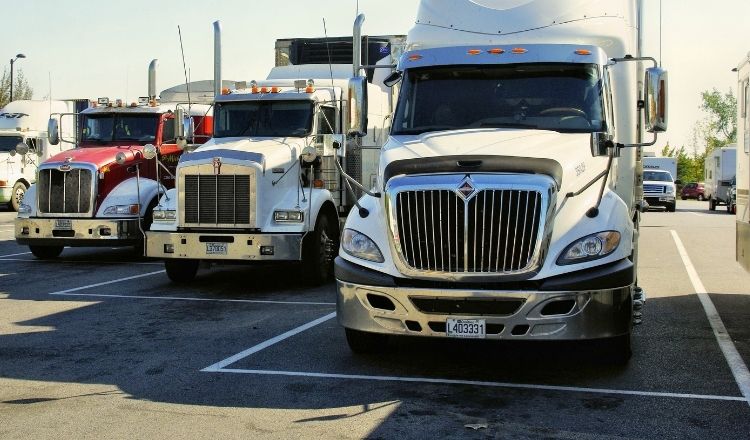Mastering Truck Body Kits A Comprehensive Guide to Essential Parts
Introduction to Truck Body Kits
Truck enthusiasts and owners alike understand the allure of customizing their vehicles. Among the myriad of options available, truck body kits stand out as one of the most impactful ways to transform the look and performance of a truck. But what exactly are truck body kits, and why are they so popular?
At its core, a truck body kit is a collection of aftermarket parts designed to enhance the appearance and functionality of a truck’s exterior. These kits typically include components such as bumpers, side skirts, fender flares, hood scoops, roll pans, and grille inserts, among others. Each part serves a specific purpose, whether it’s improving aerodynamics, adding protection, or simply enhancing aesthetics.
The popularity of truck body kits stems from the desire for individuality and personal expression among truck owners. Customizing a truck allows owners to stand out from the crowd and create a vehicle that reflects their unique style and preferences. Whether it’s a sleek and aggressive look for the street or rugged durability for off-road adventures, there’s a body kit to suit every taste and purpose.
Moreover, truck body kits offer practical benefits beyond just aesthetics. Upgraded bumpers provide added protection in case of collisions, while fender flares help accommodate larger tires for improved off-road capability. These functional enhancements, combined with the visual impact of a well-designed body kit, make it a popular choice among truck enthusiasts.
In this comprehensive guide, we’ll delve into the essential parts of truck body kits, exploring their features, benefits, and how they contribute to the overall customization of a truck. Whether you’re a seasoned enthusiast or new to the world of truck customization, this guide will provide valuable insights to help you make informed decisions about upgrading your truck’s exterior.
Front Bumper
The front bumper of a truck is not merely a cosmetic feature; it plays a crucial role in both protection and aesthetics. In this chapter, we will delve into the significance of front bumpers as essential components of truck body kits.
Front bumpers serve as the first line of defense in the event of a collision, absorbing impact and minimizing damage to the truck’s chassis and engine components. Additionally, they enhance the truck’s appearance, giving it a more aggressive and rugged look.
When considering front bumpers for your truck body kit, several factors come into play. Material choice is paramount, with options including steel, aluminum, and fiberglass. Each material offers varying levels of durability and weight, catering to different needs and preferences.
Furthermore, front bumpers come in a range of styles, from sleek low-profile designs to heavy-duty off-road bumpers equipped with winch mounts and auxiliary lighting. Selecting the right style depends on factors such as intended use, driving conditions, and personal taste.
Installation considerations also play a vital role in choosing a front bumper. Some bumpers are designed for easy bolt-on installation, while others may require modifications or professional installation for proper fitment.
In summary, front bumpers are integral parts of truck body kits, offering both protection and visual enhancement. By choosing the right bumper material, style, and installation method, truck owners can customize their vehicles to suit their specific needs and preferences while enhancing safety and aesthetics.
Rear Bumper
As we continue our exploration of essential parts within truck body kits, the rear bumper emerges as a pivotal component deserving of attention. In this chapter, we unravel the multifaceted role of rear bumpers and their significance in both protection and aesthetics.
Rear bumpers serve as guardians of the truck’s rear end, providing crucial protection against collisions and impacts. However, their importance extends beyond mere functionality; rear bumpers also contribute to the overall visual appeal of the truck.
When delving into rear bumpers for your truck body kit, material selection becomes a critical consideration. Options range from robust steel for heavy-duty applications to lightweight aluminum and even fiberglass for a balance of strength and weight savings.
Design variations in rear bumpers offer versatility to cater to diverse preferences and usage scenarios. Some rear bumpers come equipped with integrated steps, facilitating easier access to the truck bed or roof. Others feature tow hitch mounts, enhancing the truck’s towing capabilities without compromising on aesthetics.
Choosing the right rear bumper involves assessing factors such as towing requirements, off-road adventures, and desired aesthetics. Additionally, installation ease and compatibility with existing features should also influence your decision-making process.
In essence, rear bumpers are indispensable components of truck body kits, blending practicality with style to elevate the overall look and functionality of the vehicle. By carefully selecting a rear bumper that aligns with your needs and preferences, you can enhance both the safety and visual allure of your truck.
Side Skirts
Side skirts, often overlooked yet undeniably significant, take the spotlight in this chapter as we delve into their role within truck body kits. These sleek components contribute not only to the visual appeal but also to the aerodynamic performance of trucks.
Side skirts serve as extensions along the lower edge of the truck’s body, enhancing its overall profile and reducing air turbulence around the vehicle. By smoothing out airflow, side skirts can improve fuel efficiency and stability, particularly at higher speeds.
Material selection for side skirts varies, with options including durable ABS plastic, fiberglass, and carbon fiber. Each material offers a unique balance of strength, weight, and aesthetic appeal, allowing truck owners to tailor their choice to suit their preferences and budget.
Design variations in side skirts range from subtle rocker panel extensions to full-length skirts that span the entire side of the truck. The choice between these designs depends on factors such as desired aesthetics, functional requirements, and compatibility with other modifications.
Installing side skirts requires careful consideration of fitment and alignment to ensure a seamless integration with the truck’s body lines. Some kits may include mounting hardware and instructions for easier installation, while others may require professional assistance for optimal results.
In summary, side skirts play a pivotal role in enhancing both the visual appeal and aerodynamic performance of trucks within body kits. By selecting the right material, design, and installation approach, truck owners can achieve a harmonious balance of style and functionality, elevating the overall presence of their vehicles on the road.
Fender Flares
Fender flares, often seen as rugged accents, take center stage in this chapter as we unravel their significance within truck body kits. These seemingly small additions play a crucial role in both protecting the truck’s body and enhancing its visual appeal.
Fender flares serve as extensions to the wheel arches, providing additional coverage for wider tires while adding a touch of aggression to the truck’s stance. Beyond aesthetics, they also serve a practical purpose by shielding the truck’s body from mud, rocks, and other debris kicked up during off-road adventures.
Material choices for fender flares vary, ranging from sturdy ABS plastic to lightweight fiberglass and even durable metal options. Each material offers distinct advantages in terms of durability, flexibility, and aesthetic appeal, allowing truck owners to select the most suitable option for their needs.
Design variations in fender flares cater to different preferences and usage scenarios. Some flares feature a smooth, integrated appearance, while others boast bolt-on designs that emphasize a rugged, off-road aesthetic. The choice between these designs depends on factors such as intended use, desired aesthetics, and compatibility with other modifications.
Installing fender flares typically involves straightforward bolt-on installation, although some modifications may be required for a perfect fit. Many kits come with all necessary hardware and instructions, making the installation process relatively simple for truck owners with basic mechanical skills.
In essence, fender flares are indispensable components of truck body kits, blending style with functionality to enhance both the appearance and performance of the vehicle. By selecting the right material, design, and installation approach, truck owners can achieve a customized look that sets their vehicle apart while providing practical benefits on and off the road.
Hood Scoops
In this chapter, we turn our attention to a distinctive feature of truck body kits: hood scoops. These functional and visually striking additions serve a dual purpose of enhancing both the aesthetics and performance of trucks.
Hood scoops are designed to channel outside air into the engine bay, improving airflow and aiding in engine cooling. This increased airflow can lead to enhanced engine performance, particularly in high-performance or modified trucks where overheating can be a concern.
Beyond their functional benefits, hood scoops also contribute to the overall visual appeal of trucks, giving them a sporty and aggressive appearance. Whether integrated seamlessly into the hood or added as aftermarket accessories, hood scoops can dramatically alter the look of a truck’s front end.
When considering hood scoops for your truck body kit, there are several factors to keep in mind. Firstly, the size and shape of the scoop should be chosen to complement the truck’s overall design and proportions. Additionally, the material of the scoop, often fiberglass or carbon fiber, can impact both its durability and weight.
Installation of hood scoops can vary depending on the design and complexity of the kit. Some scoops may require cutting or modification of the hood, while others can be installed using adhesive or mounting hardware. Professional installation may be recommended for complex installations to ensure proper fitment and functionality.
In summary, hood scoops are not only eye-catching additions to truck body kits but also serve a practical purpose in improving engine performance. By selecting a scoop that matches your truck’s style and specifications, you can achieve a customized look while enhancing airflow and cooling for optimal performance on the road.
Roll Pans
Roll pans take center stage in this chapter as we explore their role as essential components of truck body kits. These sleek and seamless panels replace the factory rear bumper, offering both aesthetic enhancement and practical benefits.
Roll pans serve to create a clean and streamlined appearance at the rear of the truck, eliminating the bulky look of the factory bumper. This minimalist design approach lends a modern and customized look to the truck’s rear end, enhancing its overall visual appeal.
Beyond aesthetics, roll pans offer practical advantages such as improved ground clearance and departure angle, particularly for trucks used in off-road or lowered applications. By eliminating the protruding bumper, roll pans allow for smoother airflow and reduced drag, contributing to improved fuel efficiency.
Material choices for roll pans typically include steel, fiberglass, or ABS plastic, each offering varying levels of durability and weight savings. Additionally, roll pans may come in smooth or textured finishes, allowing truck owners to customize the look of their vehicle to suit their preferences.
Installation of roll pans can vary depending on the specific kit and truck model. Some roll pans are designed for bolt-on installation, while others may require cutting and welding for a seamless fit. Professional installation may be recommended to ensure proper alignment and integration with the truck’s body lines.
In summary, roll pans are essential components of truck body kits, offering a blend of style and functionality. By replacing the factory rear bumper with a sleek and streamlined roll pan, truck owners can achieve a customized look while enjoying practical benefits such as improved ground clearance and aerodynamics.
Grille Inserts
In this final chapter of our exploration into essential parts of truck body kits, we delve into the world of grille inserts. These intricate components not only enhance the appearance of the truck’s front end but also serve practical functions in terms of airflow management and protection.
Grille inserts play a crucial role in customizing the front fascia of trucks, adding character and personality to the vehicle. Available in a wide array of designs, from classic mesh patterns to bold billet styles, grille inserts allow truck owners to personalize their vehicles to match their unique preferences.
Beyond aesthetics, grille inserts also serve functional purposes. By covering the front grille openings, inserts can help manage airflow to the engine bay, optimizing cooling and performance. Additionally, some grille inserts feature integrated LED lighting, providing enhanced visibility and a distinctive look.
Material choices for grille inserts vary, with options ranging from durable stainless steel to lightweight aluminum and ABS plastic. Each material offers its own set of advantages in terms of durability, corrosion resistance, and visual appeal, allowing truck owners to select the option that best suits their needs.
Installation of grille inserts is typically straightforward, with many kits designed for easy bolt-on installation using basic hand tools. Some inserts may require minor modifications or drilling for proper fitment, but detailed instructions are usually provided to guide truck owners through the process.
In summary, grille inserts are essential components of truck body kits, offering a blend of style and functionality. By selecting a grille insert that complements the truck’s design and specifications, owners can enhance the appearance of their vehicles while enjoying practical benefits in terms of airflow management and protection.
For detailed information, you can contact us at Truck Body Parts


